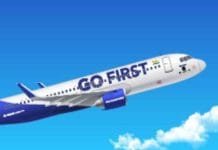Delhi,,
Air India Express Boeing 737 aircraft met with an accident 22nd May 2010 at Mangalore. The accident was investigated by the Court of Inquiry appointed by the Government and the report made available in April 2011.The accident shook the aviation industry and led everyone to undertake a look at safety oversight system of DGCA, aerodrome, air navigation, airlines, flight operations, training of pilots and all other related areas. While efforts to build and strengthen a robust civil aviation safety oversight system in DGCA were already underway, which Federal Aviation Administration of USA had confirmed during their audit of DGCA in 2009, immediate steps were taken after the accident to instil and restore confidence of the travelling public. Some of the immediate actions included a reassurance drive in the areas of aerodromes, airworthiness and operations which included inspections of all critical airports, confirmation on adherence to approved maintenance programmes by airlines, availability of approved documentation and assurance on following of regulations by the airlines. Intensive spot checks on the tarmac, checks on maintenance hangars/ stores and night inspections were undertaken during the period. Special Operations surveillance drive was undertaken wherein emphasis on adherence to SOPs, ALAR/ Monsoon Circulars, Stablised approach for safe landing, review of missed approach – ‘Go around’ policy, presence of Cabin crew in cockpit in case of one pilot leaving the cockpit, FOQA and CRM was ensured.
A Civil Aviation Safety Advisory Council (CASAC) was formed on May 28, 2010 with the mandate to strengthen aviation safety environment through synergisation of available expertise in areas of airlines, airworthiness, operations, air navigation, aerodromes, aircraft engineering, human performance. Special invitees to the Council include FAA, ICAO Experts, IATA, Airbus, Boeing, Bombardier etc. This is an ongoing initiative under the Chairmanship of Secretary (Civil Aviation). The Council gets its technical inputs from working groups covering Operations (Fixed wing and helicopter sub-Groups), Aerodromes, Air Navigation Services, Airworthiness General Aviation and Helicopters. Based on the reassurance drive several issues in the three areas of aerodromes, operations and airworthiness came up. Immediate actions to address the deficiencies have been taken up during the past one year. Several safety related circulars have been issued and implementation ensured. These include presence of Cabin crew in cockpit in case of one pilot leaving the cockpit, Cabin Crew to interact with pilots on intercom during period of lean cockpit activity, in the event of incapacitation of PIC, copilot to take over control and in the event of PIC not responding to calls of copilot regarding ‘go around’, assertiveness by copilot to be encouraged. Regulatory provision for penal action for reporting for duty with alcohol consumption has been made. Pilots are being subjected to Breath Analyser test prior to flights. License are being suspended for three months in case of first BA positive and on second BA positive instance, the licence is cancelled.
In a move to step up the quality of training Captains, the period of Instructorship/ Examiner-ship has been restricted to 5 years with proficiency check every 2 years. Increased oversight for selection of trainers, quality of training imparted by trainers, integrity of simulator training have been introduced. Breath Analyser Test has been mandated for approval of Training Captains and Pilots with BA ‘positive’ report have been debarred from becoming Training Captains. Existing Training Captains if found BA ‘positive’ are debarred from training Captain list for three years.The process for approval of foreign pilots has been made stringent wherein background checks are being done to ensure that these pilots have accident free record. The experience requirements for the foreign pilots have been enhanced and the pilots are subjected to Proficiency Checks before approval is granted by DGCA. These pilots are being subjected to same medical standards as the Indian pilots.
Many of the issues relating to condition and facilities at aerodromes which came up during the reassurance drive of critical aerodromes have been taken up with Airports Authority of India as well as Defence authorities for immediate corrective action. These relate to Friction test for condition of the runway, markings, location of Precision Approach Path Indicator (PAPI) for realignment with aiming point marking, adequacy of runway end safety area (RESA), Installation of localiser antenna frangible structures at identified airports of AAI, calibration of equipment such as ILS and VOR/DME In order to smoothen the licensing process, an Aerodromes Directorate has been set up in AAI with support staff. DGCA has undertaken a special drive for licensing of AAI airports. As on date, 42 airports for public use have been licensed by DGCA as against 29 in January 2011 of which 32 are AAI airports. There were 6 AAI licencsed airports in November 2010. The Committee set up by the Government to examine the Flight Duty Time Limitations (FDTL) of crewmembers has submitted its report to the Government in September 2010. The report has been accepted and based on the recommendations of the Committee, a draft regulation has been prepared and comments invited. These comments are being reviewed for finalisation of the regulation.
Review of the recommendations made by the Court of Inquiry of the Mangalore crash has revealed that action has already been initiated by DGCA on the issues raised in the report by DGCA during the last one year and the organisation and the Government is sensitive to safety of aircraft operations. Government and DGCA are committed to sustain and enhance safety oversight system through proactive regulation making and its compliance by approved organizations. The real challenge today is to manage phenomenal growth of air traffic with safety.



















